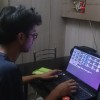OpenCV C++ Program to play a video
Last Updated :
19 Dec, 2022
The following is the explanation to the C++ code to play a video in C++ using the tool OpenCV. Things to know: (1) The code will only compile in Linux environment. (2) To run in windows, please use the file: ‘play_video.o’ and run it in cmd. However if it does not run(problem in system architecture) then compile it in windows by making suitable and obvious changes to the code like: Use <iostream.h> in place of <iostream>. (3) Compile command: g++ -w vid.cpp -o vid `pkg-config –libs opencv` (4) Run command: ./vid (5) Please make sure that the video : “Bumpy.mp4” is in the same location. Before you run the code, please make sure that you have OpenCV installed on your system. Code Snippet:
#include "opencv2/highgui/highgui.hpp"
// highgui - an interface to video and image capturing.
#include
// The header files for performing input and output.
using namespace cv;
// Namespace where all the C++ OpenCV functionality resides.
using namespace std;
// For input output operations.
int main()
{
VideoCapture cap("Bumpy.mp4");
// cap is the object of class video capture that tries to capture Bumpy.mp4
if ( !cap.isOpened() ) // isOpened() returns true if capturing has been initialized.
{
cout << "Cannot open the video file. \n";
return -1;
}
double fps = cap.get(CV_CAP_PROP_FPS); //get the frames per seconds of the video
// The function get is used to derive a property from the element.
// Example:
// CV_CAP_PROP_POS_MSEC : Current Video capture timestamp.
// CV_CAP_PROP_POS_FRAMES : Index of the next frame.
namedWindow("A_good_name",CV_WINDOW_AUTOSIZE); //create a window called "MyVideo"
// first argument: name of the window.
// second argument: flag- types:
// WINDOW_NORMAL : The user can resize the window.
// WINDOW_AUTOSIZE : The window size is automatically adjusted to fit the displayed image() ), and you cannot change the window size manually.
// WINDOW_OPENGL : The window will be created with OpenGL support.
while(1)
{
Mat frame;
// Mat object is a basic image container. frame is an object of Mat.
if (!cap.read(frame)) // if not success, break loop
// read() decodes and captures the next frame.
{
cout<<"\n Cannot read the video file. \n";
break;
}
imshow("A_good_name", frame);
// first argument: name of the window.
// second argument: image to be shown(Mat object).
if(waitKey(30) == 27) // Wait for 'esc' key press to exit
{
break;
}
}
return 0;
}
// END OF PROGRAM
About the Author: Aditya Prakash is an undergraduate student at Indian Institute  of Information Technology, Vadodara. He primarily codes in C++. The motto for him is: So far so good. He plays cricket, watches superhero movies, football and is a big fan of answering questions. If you also wish to showcase your blog here, please see GBlog for guest blog writing on GeeksforGeeks.
of Information Technology, Vadodara. He primarily codes in C++. The motto for him is: So far so good. He plays cricket, watches superhero movies, football and is a big fan of answering questions. If you also wish to showcase your blog here, please see GBlog for guest blog writing on GeeksforGeeks.
Like Article
Suggest improvement
Share your thoughts in the comments
Please Login to comment...